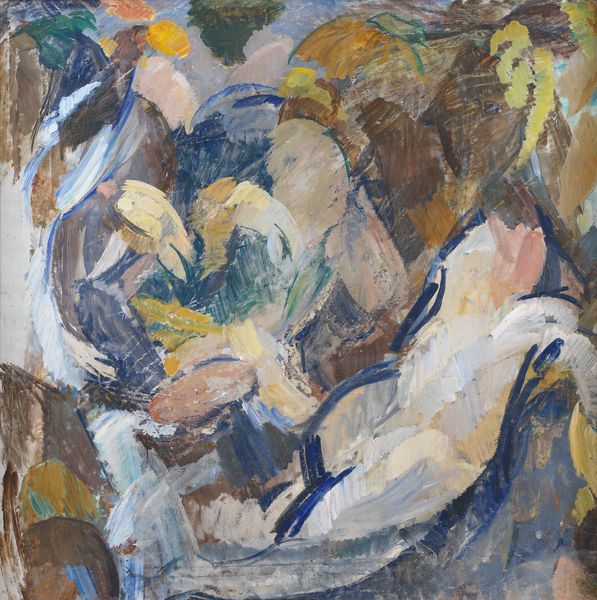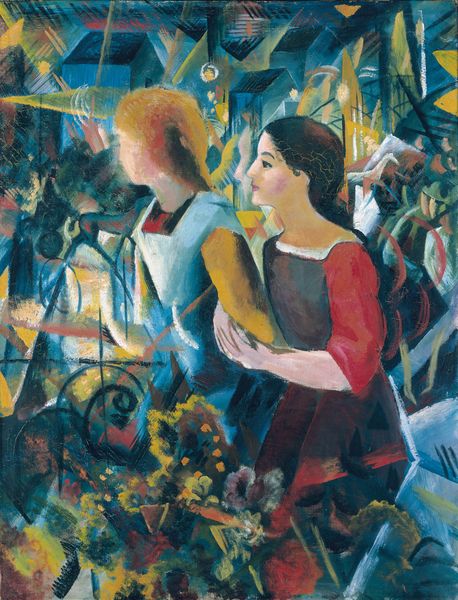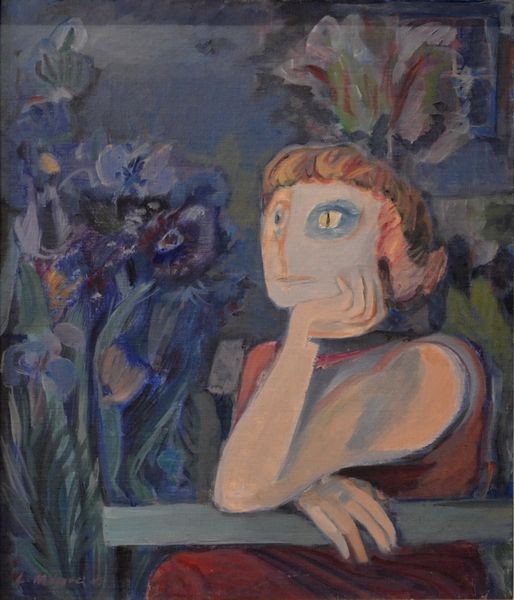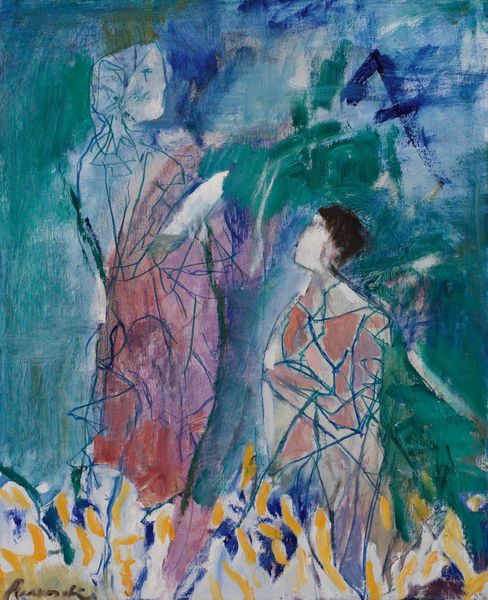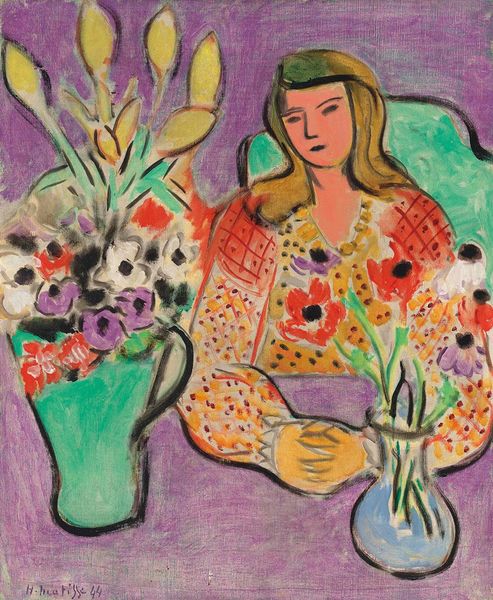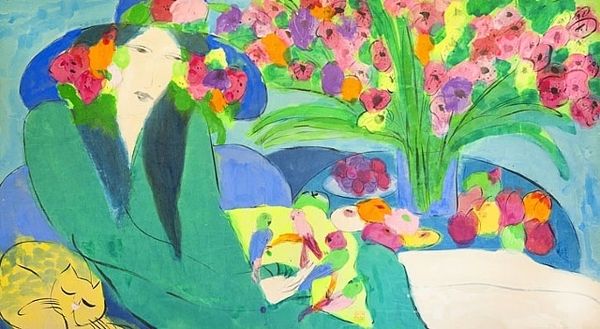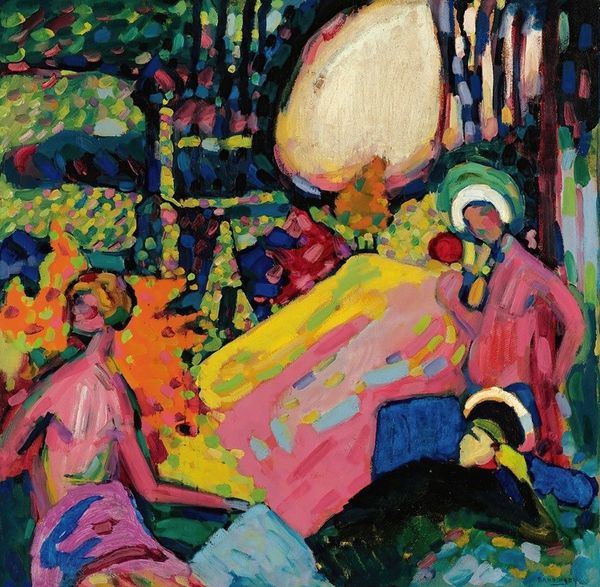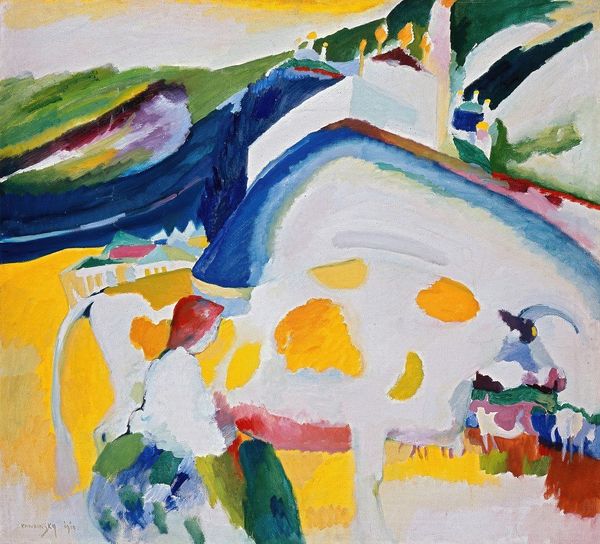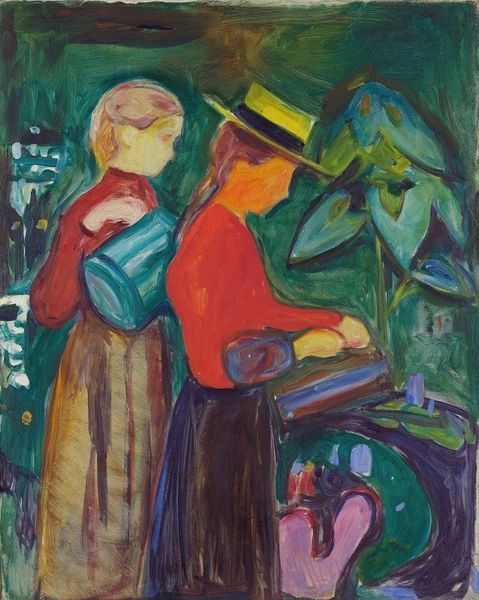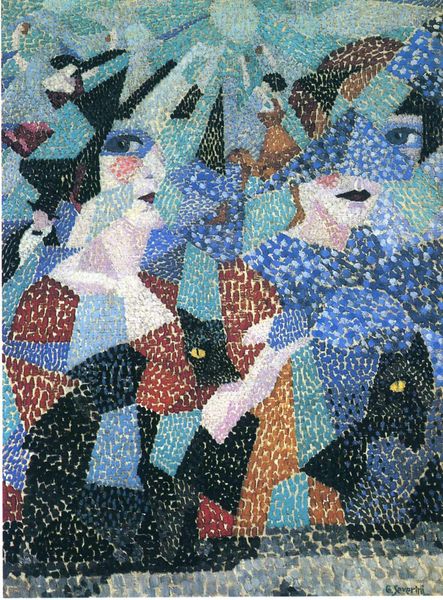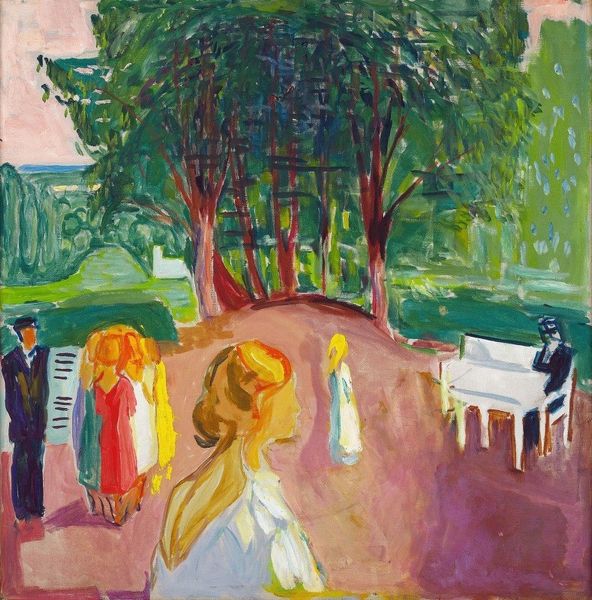
painting, oil-paint
#
portrait
#
painting
#
oil-paint
#
figuration
#
oil painting
#
expressionism
#
female-portraits
#
modernism
#
expressionist
Copyright: Public domain
Editor: August Macke’s "Girl with a Fish Bowl," oil on canvas, currently at the Von der Heydt Museum… It's such a striking image, so full of color! The figure’s faceless, which I find a little unsettling. How do you interpret this work, especially considering its place in art history? Curator: Well, considering Macke's involvement with Expressionism and his brief association with the Blaue Reiter group, it's vital to look at the social and artistic context. Facelessness, while unsettling to modern eyes, reflects a broader concern in early 20th-century art: moving away from realistic representation. How do you think this rejection of the traditional portrait interacts with the contemporary museum audience's expectations? Editor: I guess we're used to seeing portraits as capturing a likeness, an individual identity. Here, that's obviously absent. Was this a common approach within the Expressionist movement to challenge that traditional view? Curator: Exactly. Expressionism sought to convey inner emotion rather than outer appearance. This piece questions the role of portraiture within a rapidly changing society, particularly the increasing mass production of images. Macke might be suggesting a move from individual importance towards the collective experience. What do you observe in the visual construction itself that supports such collective identity? Editor: The vibrant colors, maybe? The mosaic-like background seems to almost engulf her, blurring the lines between individual and environment. Curator: Precisely! It's about questioning established norms, challenging the viewer’s perspective, and acknowledging art’s evolving social role. Do you feel differently about the facelessness now? Editor: I do. I now see the lack of individual features as an active choice, an artistic statement on identity within a broader social context. Curator: Indeed, and remembering that helps us understand how Macke contributed to a larger, evolving dialogue within modern art history.
Comments
No comments
Be the first to comment and join the conversation on the ultimate creative platform.
